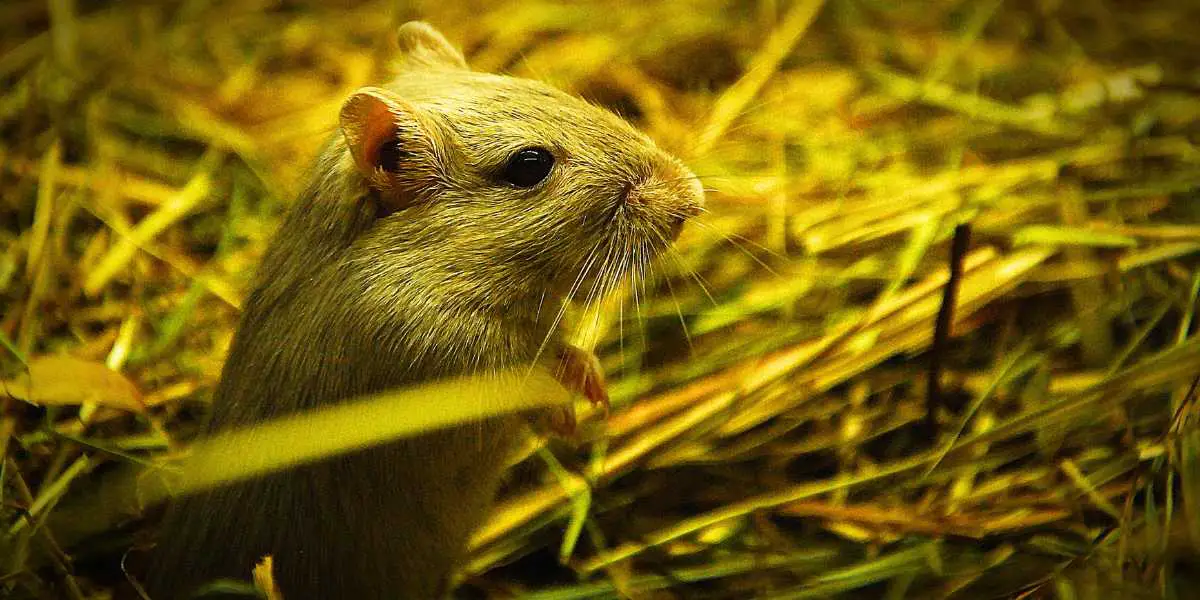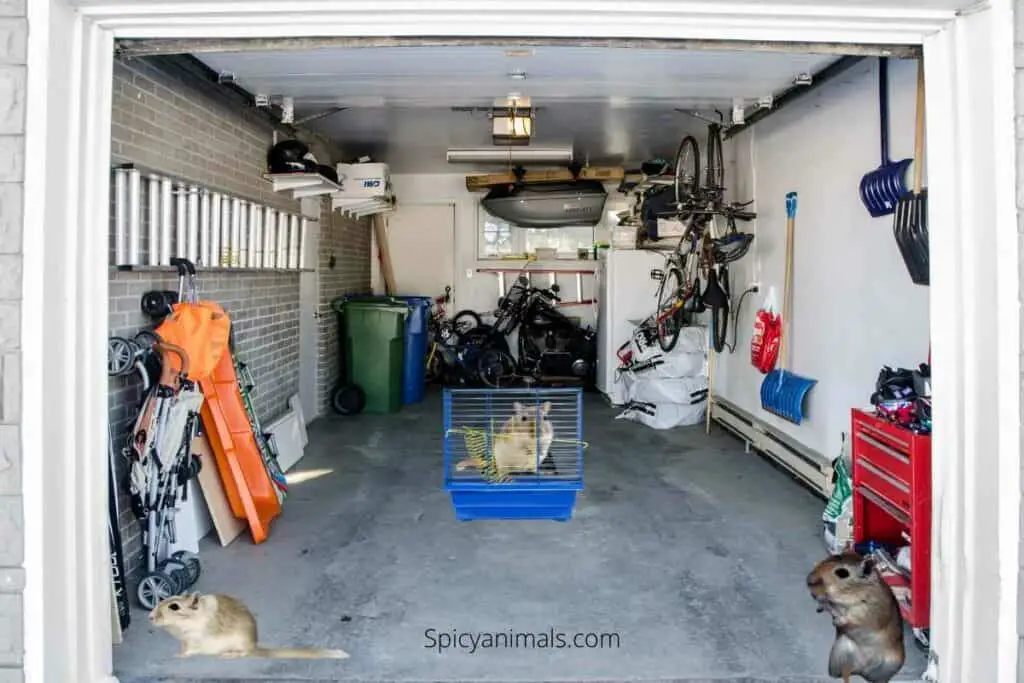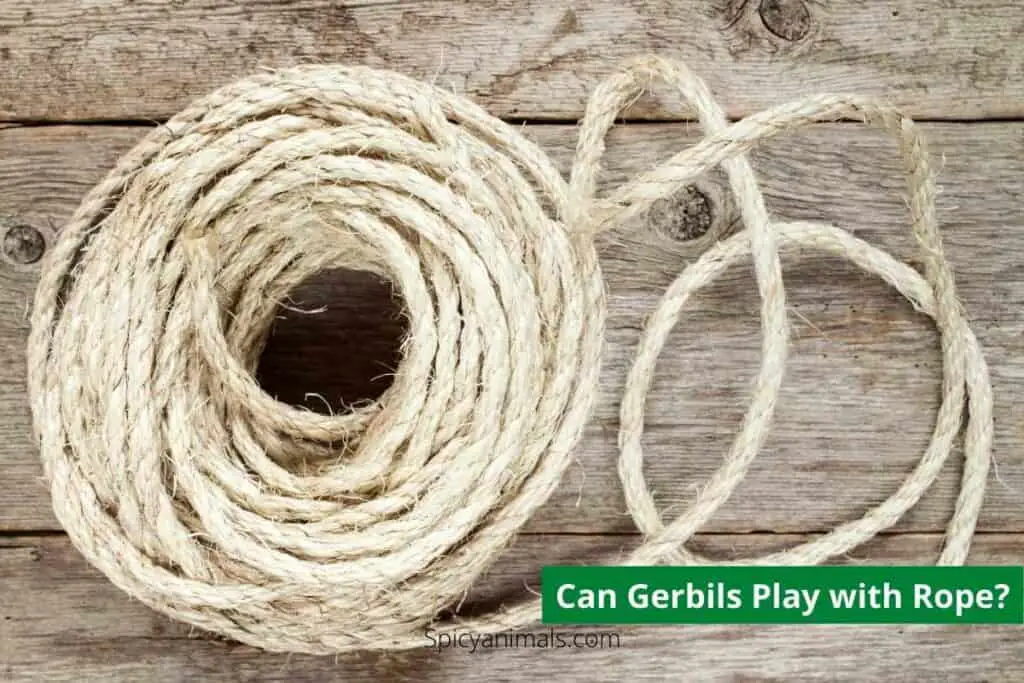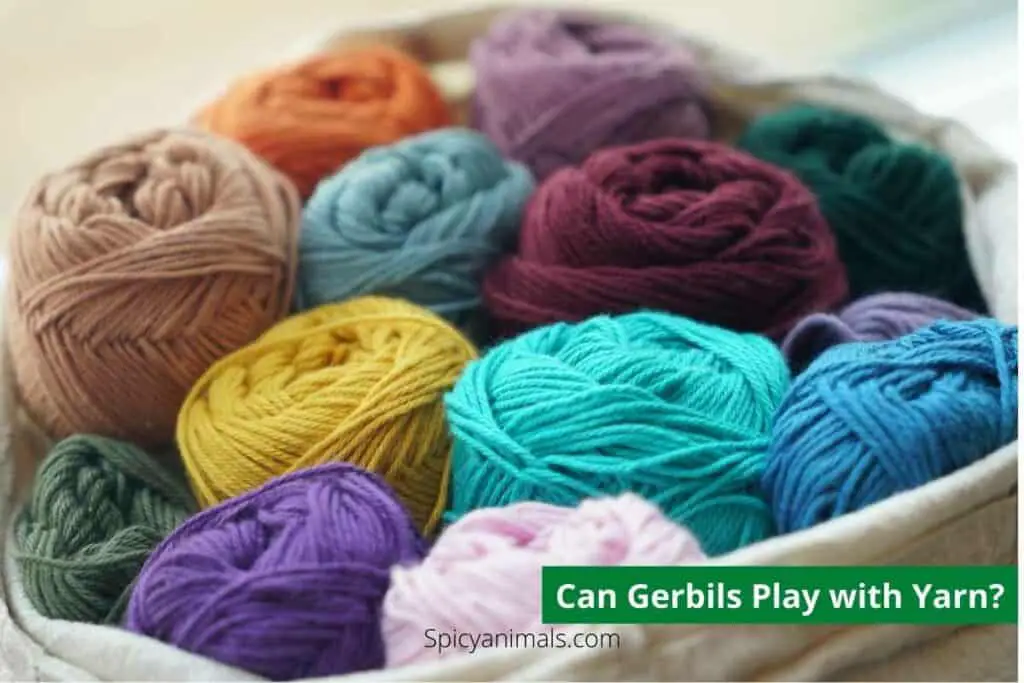Gerbils are relatively easy to care for, and if provided with the proper housing and habitat, can live long and healthy lives. This guide provides information on the basics of gerbil housing – what makes a good home, how large the space should be, and how to accessorize it.
Understanding your gerbils’ needs will ensure they enjoy their environment as much as possible. Providing safe, comfortable housing is an important requirement for any pet owner.
With proper preparation, gerbil owners will be able to maintain a hygienic habitat that encourages healthy behaviors in their pets.
Table of Contents
Housing For your Gerbil
When it comes to housing gerbils, there are a few things you need to consider, like the size and type of cage, the type of bedding, and the other items you will need.
The cage should be large enough for the gerbils to climb, run, and play. The bedding should provide a safe and comfy environment, and the other items should include things like hiding places and toys.
These tips will help you provide the best and most secure housing possible for your gerbils.
Types of housing
There are many types of housing available for gerbils, ranging from simple cages to complete customized habitats that are designed specifically for them. The most important thing to consider when selecting the right habitat is the amount of space available for your pet and its activity level.
Cages: Small, basic cages made from wire mesh are popular among gerbil owners because they are often more affordable than larger set-ups and require minimal assembly. They should provide plenty of room for digging and burrowing activities and should be at least two cubic feet in size.
Plastic-base cages can also be purchased, although these tend to be less durable than wire ones.
Tank or Glass Habitats: Aquariums or terrariums offer gerbils a large amount of space to explore as well as concealment spots that they can use if they feel scared or threatened. They also provide ample ventilation and should be at least one gallon per small animal inside if used as a permanent home.
Custom Habitats: If you want to create a more comfortable environment with customized features, large plastic storage bins make excellent homes for gerbils.
These can come with built-in tunnels, ramps, or platforms that give your pets an opportunity to exercise their bodies and minds through exploration and playtime.
Be sure to provide nesting material such as shredded paper or hay in order to give them a cozy place to rest as well as plenty of chew toys like wood slices or dried roots which will help keep their teeth trim and healthy.
Size of housing
The size of housing your gerbil needs is dependent on the number of gerbils living together and the type of housing you have chosen. For a small, wire home, it is recommended that you allocate 10 gallons (38L) for one or two gerbils.
This should give them enough space to move around without feeling too cramped; however various factors can lead to adjustments in the optimum size of housing for your gerbil.
For example, providing extra furnishings such as toys and activities may require additional space to avoid overcrowding and ensure comfort for your pets. Using tubes as part of their habitat also means that more space is required to make sure there is enough room for them to dig around and explore without accidentally trapping themselves.
To be sure your gerbils are getting suitable accommodation provide 3-4 times the amount they would need in a cage with nothing else added in terms of extra toys or exploration items.
Ventilation
In addition to the considerations outlined above, proper ventilation is essential to create and maintain a healthy, safe gerbil habitat. Gerbils need adequate air circulation to prevent the buildup of potentially harmful toxins within their environment.
Gerbils must not be exposed to drafts or temperature extremes; an ideal temperature range for gerbils is between 68 and 72 degrees Fahrenheit (in Celsius: 20-22°C).
To ensure ventilation in their enclosures, keep the cage lids securely fastened over the top of the habitat. Use mesh covers for your cages instead of solid lids to allow air to move freely into and out of the habitat.
If you use an aquarium-style enclosure, provide a screen cover in addition to any existing lids or doors; some versions have specially screened lid tops designed especially for these purposes.
Make sure that there are adequate ventilation holes on any plastic storage containers used as a sleeping area for your gerbil; these should be positioned away from where the most activity will occur within the cage.
You should also monitor ventilation in relation to heavy exercise periods during which your gerbil may become overheated. Ensure there’s access to fresh oxygen within the cage by allowing plenty of airflow and providing shallow water dishes without covers that will evaporate quickly.
If your gerbil seems overheated during lengthy play periods, open a window near his habitat or increase air movement with a fan positioned nearby.
Temperature
The ideal temperature for a gerbil enclosure is between 65 and 80 degrees Fahrenheit. The area should be well ventilated, but not so cold that your tiny friend can feel a draft.
The cage should be placed in an area away from drafts, ventilation ducts and direct sunlight to avoid temperature fluctuations.
Humidity levels should stay between 30 and 50 percent to ensure the gerbils’ comfort and health. If the air is too humid, use a fan to encourage good airflow throughout the enclosure.
It’s also important to keep the environment clean, as debris can cause complications with proper airflow and contribute to humidity levels.
Humidity
Gerbils need to live in an environment that mirrors their natural habitat as much as possible. That means the humidity should be about 30–40%, with regular fluctuations, and the temperature should Hovers around 21°C to 24°C because the low moisture content of a gerbil’s fur means they cannot cope very well with sudden changes in heat.
Humidity is an important factor when keeping gerbils and it is best managed through careful enclosure ventilation, substrate choice, and temperature regulation.
Ensure good surrounding air circulation by providing a ventilation hole in your gerbil’s enclosure, about 6mm wide for every square foot of enclosure floor space.
Choose dust-free substrates, like paper-based options, which assist with air humidity levels and keep droppings dry and easier to remove at cleaning times.
You should avoid setting up a wet or damp environment as this can encourage bacterial or fungal growth which can lead to illness in animals if they are exposed over long periods of time. Furthermore, too much humidity can also cause gerbils to become unwell if they start to suffer from dehydration or stress due to dehydration-related problems.
You should use a hydrometer or hygrometer within the enclosure area so you maintain an accurate indication of the relative ambient air humidity levels within your gerbil’s home environment for optimal conditions at all times.

Habitat Tips for Your Gerbil
Providing a comfortable habitat is essential when it comes to taking care of your gerbil. It is important to give your gerbil an environment that will promote its health and well-being.
A suitable gerbil habitat should contain ample space for your pet to move around in, as well as adequate hiding places to help your gerbil feel safe and secure in its new home.
Let’s explore some of the key habitat requirements for gerbils.
Substrate
Substrate is an important factor to consider when designing a habitat for your gerbil. It should be absorbent and built from materials that can’t be eaten or otherwise damaged.
Popular substrate options for gerbils include paper bedding, sawdust made from, wheat, grass hays, and aspen shavings. Do your research on what is best for your pet before selecting a substrate — some may cause allergies.
Reading tip: Can Gerbils Use Pine Bedding in Their Cage?
Wood shavings, such as cedar bedding, should never be used in a gerbil habitat because they can trigger respiratory problems in the small animal.
Paper-based substrates such as Carefresh and Yesterday’s News are popular with owners because they’re absorbent and free of any chemicals and fragrances. Aspen shavings are also great alternatives;
however, their texture may not be as comfortable for your pet when compared to softer substrates like wheat hay or paper bedding. Some owners opt for mix-and-match combinations as well; for instance, using paper bedding on the bottom layer with wheat hay scattered over the top section of the habitat to provide nesting material and hiding places.
Bedding
Gerbils are burrowers, so proper bedding is essential for their well-being. Shredded paper supplies the nesting material they need to make tunnels and caves in the very upper two-thirds of their cage. Avoid using cedar shavings or other materials that can be easily inhaled, as these can cause respiratory problems for your gerbil.
Straw is also a great nesting material. Straw also provides an ideal environment for many microorganisms who will clean up leftovers and decompose most of the waste in your gerbil’s cage, eating anything underneath the straw too quickly to cause any foul odor or health hazards to your non-negligent pet owners.
Be sure you are changing the bedding material at least once every seven days; on top of that, check underneath any materials that you have put into their habitat (such as large rocks or heavy pieces of wood) regularly and spot clean daily where necessary.
This should help keep things smelling fresh in your gerbil’s habitat and also keep them healthy by preventing infection or mold build-up.
Toys and Accessories
Gerbils are lively and active creatures, so they need plenty of things to do in their habitat. Toys actually help your pet to stay healthy and entertained as they complete important tasks like digging, tunneling, and exploring. There are a variety of toys that you can buy for your gerbil or make at home.
Some store-bought options include; hideaways (small houses or tunnels), activities on stairs or swings, exercise wheels, chew toys, and plastic tubes for digging or tunneling. These accessories will vary in price depending on the size and type purchased.
There are also many fun items that can be made at home out of everyday materials such as wood blocks, cardboard boxes with tunnels cut out of them, and small stuffed animals that have been thoroughly washed but not dyed or sprayed with scents/chemicals.
You can also provide simple items such as stones and twigs ranging in size from 1/2 – 2 inches in diameter to give them something to engage with while participating in playtime activities.
Plastic kitchen containers with air holes drilled into the sides can also be a great addition. The possibilities are endless when it comes to enrichment activities for your gerbil!
Lighting
Providing the right lighting for your gerbil habitat is critical to their overall health and comfort. Natural daylight is ideal but not always available, so you should look into buying a full-spectrum light bulb to put in your gerbil habitat when daylight isn’t available.
This type of bulb gives off the closest approximation to natural sunlight and helps to stimulate their senses.
Additionally, make sure that your gerbils have access to shade and darkness within their habitat. This will help them rest, as it’s important for gerbils to have enough sleep; otherwise, they can become stressed or ill.
To give them access to both light and dark, consider buying a dimmable light that can easily transition from light to dark with the switch of a button. Your gerbils will be able to determine when it’s daylight and when it’s nighttime according to the level of lighting in the habitat—a great way to create a healthy environment!
Diet
In the wild, gerbils eat mostly seeds, nuts, fruits, and small insects. To replicate the diet of their wild ancestors in the home environment, it is important to offer a healthy and balanced diet.
Gerbils should be fed a combination of hay, commercial gerbil pellets or mixes, occasional fresh produce and occasional treats. Hay should comprise a large portion of their daily allotment since it provides essential roughage for a gerbil’s digestion system.
Commercially-available gerbil food will typically include all the nutritional components needed for your pet with additional vitamins and minerals that are not found in nature. Providing fresh fruits and vegetables will help provide variety in your pet’s diet as well as extra nutrients that can sometimes be lacking in commercial food offerings.
Treats such as millet sprays, Nutri-berries or other small bird treats are fine to provide occasionally as part of your gerbil’s overall nutrition plan.
It is important to understand that some foods may cause health problems for gerbils such as obesity or digestive issues; therefore certain items like fatty snacks and chocolate should be avoided completely to keep your pet healthy.
Conclusion
Finally, gerbils require time and attention in order to stay healthy and survive. If a gerbil is taken away from its habitat, it will become deeply depressed and likely die.
Therefore, it is important to make sure that gerbils are handled carefully and regularly socialized and exercised to prevent stress.
Creating a safe, comfortable habitat for your gerbil ensures that your pet will have the secure home it needs. A larger cage with the right amount of space for climbing, running, and nesting will help keep them active and entertained, while also providing additional health benefits.
By investing in the best possible environment for your pet’s comfort and safety, you are ensuring their vitality for years to come.




